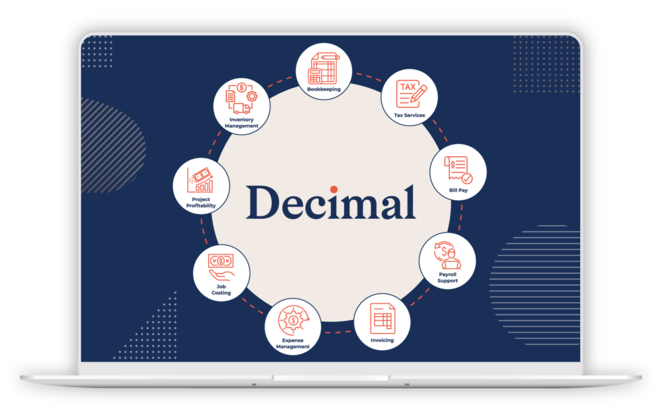Flexibility is essential for any accounting firm hoping to thrive in 2025. With client expectations shifting, regulations evolving, and technology advancing at a rapid pace, firms must be ready to adapt.
But flexibility is the goal, not a strategy itself. To actually achieve flexibility, your firm needs to cultivate operational visibility, ensuring you have a clear, real-time understanding of every moving part in your business.
At the same time, you and your team must be equipped and willing to embrace change as it arises, responding proactively to new challenges, shifting client needs, and evolving regulations. By combining transparent workflows with a culture that welcomes adaptation, you transform flexibility from an abstract ideal into a practical, sustainable reality for your practice.
So how can your firm build true operational flexibility, and how can visibility help? Let’s break it down.
Why flexibility even matters for accounting firms
Seasonal fluctuations, sudden regulatory changes, and unexpected staff turnover can disrupt your day-to-day operations, no matter how well-oiled your firm is. Firms that operate rigidly often find themselves scrambling to keep up.
On the other hand, flexible firms can:
- Adjust to client demands without compromising quality
- Implement new technologies with minimal disruption
- Quickly reallocate resources when priorities shift
- Stay compliant with changing laws and standards
Ultimately, flexibility helps firms stay competitive and grow sustainably.
Visibility is the key to operational flexibility
Flexibility isn’t just making quick pivots. It’s the ability to make informed decisions. To do that, you need visibility across your firm’s operations.
Think of visibility as a clear dashboard: When you can see what’s happening at every stage–client communications, project statuses, task assignments, deadlines–you’re in a much better position to anticipate changes, prepare for changes, and act swiftly.
Benefits of Operational Visibility
- Proactivity. Spot bottlenecks or issues before they escalate.
- Resource allocation. Understand team workloads to shift tasks or assign help where needed.
- Client service. Deliver timely updates and adjust services to match client needs.
Practice management software (like Canopy) gives firms a centralized way to monitor workflows, deadlines, and communications, which makes flexibility much easier.
Even if you’re not using a dedicated practice management software, seeking out a way to get a holistic view of your operations is key to building flexibility.
Strategies to build flexibility (and visibility!)
Ready to boost flexibility and visibility? Here are some actionable strategies to get started:
- 1. Standardize… then customize
Take the time to fully standardize core processes, like client onboarding, document requests, and project tracking, to create consistency and reduce confusion. Ensure new employees are trained on these standards and that more tenured employees also take the time to understand and implement them.
Once these are set, you can more easily customize approaches as client needs or regulations change.
- 2. Adopt cloud-based solutions
Moving work to the cloud enables real-time collaboration, remote access, and centralized data management. You want team members to be able to see updates instantly, clients to get faster responses, and the ability to work with offshore or remote employees.
- 3. Use dashboards and real-time reporting
Implement tools that offer clear, real-time dashboards of your projects, deadlines, and team performance. This visibility empowers managers to allocate resources quickly and gives everyone clarity on their priorities.
- 4. Foster a Culture of Feedback
Make it easy for staff to share what’s working and what isn’t. Building an open and supportive feedback culture is essential if you want your employees to feel comfortable embracing change.
Regular feedback loops can help you spot issues early and adapt as needed. Your employees, especially those on the front lines of work, are often the first to recognize issues or have ideas for how to improve. While you have the big picture to operate off of, which frontline employees often miss, it’s vital that you genuinely listen and respond to feedback.
When team members see their suggestions lead to real improvement or that their concerns are being addressed transparently, they’re more likely to stay engaged and be open to future changes.
Encouraging honest communication creates a culture where staff know their voices matter. Over time, this openness makes your practice more resilient, as everyone feels invested in continuous improvement and ready to navigate whatever changes come next.
The payoff
Building flexibility into your accounting firm’s operations is an ongoing process that requires attention to visibility and a willingness to change. By standardizing workflows, embracing cloud-based tools, and fostering a culture of communication and feedback, your firm can adapt to change with confidence. Operational visibility, like that offered by modern practice management platforms, turns flexibility from a buzzword into a practical advantage.
When your firm builds both flexibility and visibility into operations, you become more responsive and resilient across the organization. Team members feel empowered to do their best work, clients get more consistent service, and your business is better equipped to handle whatever comes your way.
With the right strategies in place, your firm can thrive in a world where change is the only constant.
Sponsored Content: This article is generously brought to you by one of our valued sponsors. Their support enables us to continue delivering expert insights and the latest industry trends to our dedicated community of accounting professionals.
.png?width=150&height=63&name=TWRlogo-regmark_blueblack%20(1).png)
.png)










Do you have questions about this article? Email us and let us know > info@woodard.com
Comments: